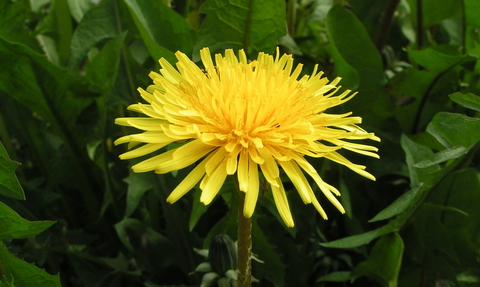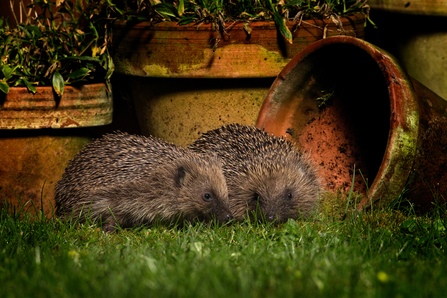
WildNet - Richard Burkmar
Wildlife Gardening Tips for February
Help hedgehogs
It’s a good time now to put food out for Hedgehogs which may be coming out of hibernation and Badgers which may be struggling to find food towards the end of winter. Do not feed bread or milk which can cause illness, but instead put out a mixture of dog food and rolled oats.

© Jon Hawkins Surrey Hills Photography
Make a home fit for a queen
Early in the spring, generally from March onwards depending on the weather, Queen Bumblebees will emerge from hibernation to feed and look for places to build their nests. They use structures like old vole or mouse nests. You can help them by leaving some early Dandelions in the garden to provide an essential early source of nectar and by building a bumblebee nest by following these instructions:
- Find a dry and sheltered sunny area in the garden to site your nest. On a bank is ideal as this will be well drained but if this isn’t possible, use a flowerbed or the bottom of a hedge.
- Get a clay flowerpot, of a depth of 20cm or deeper and half-fill it with nesting material, such as shredded paper, dry grass or straw.
- Attach a 5cm length of hosepipe (25-30mm wide) to the drainage hole in the bottom of the pot.
- Bury the pot upside-down in the soil, so that the drainage hole in the bottom of the pot is facing upwards and the entrance to the hosepipe is poking out of the soil.
- Add a 10cm tall upright stick near to the entrance to the hose pipe. This will help you remember where it is and will also be used by the bumblebees later in the summer to find their way back to the nest.
Meadow management
On a dry day, prepare a small (or large!) patch of ground for a wildflower meadow. Wildflowers require soil that is low in nutrients, so if you can, start by removing the top soil. Scratch the soil with a rake but don’t rotovate as this could bring unwanted seeds to the surface.
